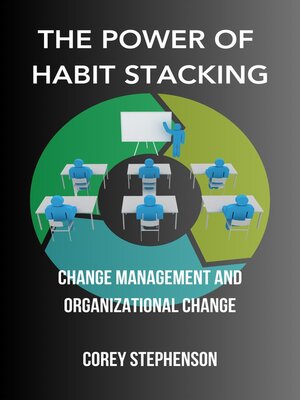
Sign up to save your library
With an OverDrive account, you can save your favorite libraries for at-a-glance information about availability. Find out more about OverDrive accounts.
Find this title in Libby, the library reading app by OverDrive.



Search for a digital library with this title
Title found at these libraries:
| Library Name | Distance |
|---|---|
| Loading... |
In the ever-evolving landscape of business, organizations are constantly faced with the need to adapt and embrace change. Whether it's the introduction of new technologies, shifts in market dynamics, or internal restructuring, change management has become a crucial discipline for success. However, implementing change within an organization can be a complex and challenging process. That's where the concept of habit stacking comes into play – a powerful strategy that can catalyze change and drive organizational growth.
Change management, at its core, is about guiding individuals, teams, and entire organizations through the process of transition. It entails understanding the current state, envisioning the desired future state, and strategically bridging the gap between them. While change can be disruptive and met with resistance, it also presents opportunities for innovation, improvement, and competitive advantage.
Enter habit stacking, a concept rooted in the understanding that lasting change is often best achieved by leveraging existing habits and routines. Habit stacking involves building upon existing behaviors to create new, desired habits. It recognizes that humans are creatures of habit, and by consciously linking new actions to established ones, the likelihood of successful adoption and integration increases significantly.
In the context of organizations, habit stacking can be a transformative tool for change management. It acknowledges that change is not a one-time event but rather an ongoing process. By identifying and capitalizing on existing routines and habits within the organizational culture, leaders can introduce and embed new behaviors, processes, and mindsets more effectively.







